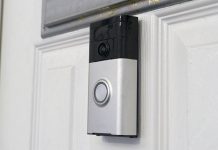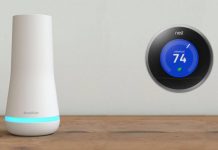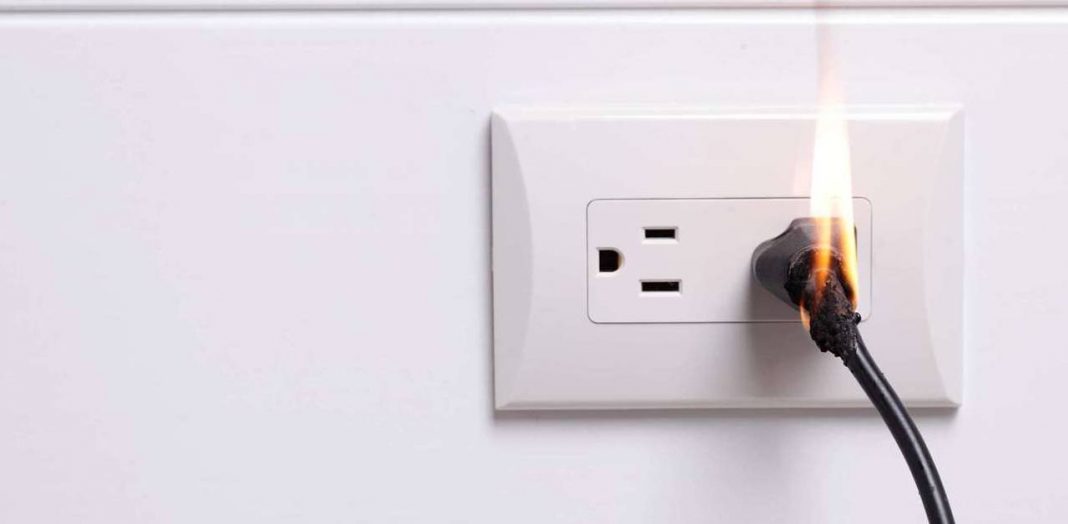UPDATED February 10, 2022 This piece has been updated to reflect the emergence of new technology


Christian Mathews Security Writer
In most households, we often see people using power strips. You probably have a few in your home as well. Standard power strip expands a single electric outlet to multiple outlets. Some power strips also serve an additional function – protecting your electronic devices from electric or voltage surge. They are called surge protectors and are essential for electrical devices such as television and computers. Find the best surge protector for computer for your needs.
We will explain what surge protectors are, what they do, why they are important and the specifications you need to look for when buying one.
1What Is A Surge Protector And Why Is It Important?
To understand why surge protectors are essential, we need to know about voltage surges first. The electricity we receive in our household is tuned at a specific voltage. In most of Asia, Europe, and Africa, the standard household voltage is supplied at 220 to 240 V. In the US, the standard voltage is 120 V. Needless to say, the devices used in these places are meant to operate at the same voltage.
Rarely and occasionally, the voltage supply in our homes might jump to a value higher than the standard voltage, and that is what we call a voltage surge or transient voltage. This surge usually lasts for an extremely short duration – just a few nanoseconds. That may not seem a lot, but it’s enough to do considerable damage to your computer and other devices.
If the voltage increase is significantly high and the surge lasts longer, it can instantly damage your computer by overheating and burning the wiring. Smaller and shorter surges may not do any immediate damage. However, they will still wear out your devices over time if it happens multiple times. Voltage surge is caused due to technical factors such as problems with insulation, accumulation of static charges, magnetic fields and also due to lightning.
What does a surge protector do? It protects your device from voltage surges at all times so that it won’t ever damage your computer and other devices. And it’s not just about keeping your devices safe. Overheating and burning of wires due to voltage surges can even lead to fire breakouts in the home. So a surge protector is essential for your safety as well.
Now let’s take a look at how the best surge protector for computer work to mitigate excess voltage.
2How Does A Surge Protector Work?
Surge protectors detect and divert excess voltage to the grounding wire, which transmits it to the earth. It achieves this effect with the help of various mechanisms such as:
- Metal oxide varistors (MOVs)
- Gas discharge tube
- Transient voltage suppressor diodes (TVS)
If you have no clue what these things are, don’t get overwhelmed. They all work more or less the same way, and we’ll explain that in simple words.
An important aspect of an electrical circuit is ‘resistance.’ Resistance is a component’s ability to oppose the flow of current. If resistance is higher, the flow of current will be less. When there are two paths for the current to flow, it will always choose the one with less resistance.
The materials used in the best surge protector for computer usually have some common properties:
- They are all connected to the grounding wire
- They are designed to have a high resistance when the voltage is at standard level, but the resistance decreases when the voltage exceeds that level.
If the standard voltage is 220V, the material inside the surge protector will have high resistance as long as the voltage supply is 220V and no current will be diverted to the grounding wire.
When there is a voltage surge, it causes the material inside to drop its resistance, so current will start flowing through it and into the grounding wire. And that will restore the normal voltage in the main circuit. So even without getting into too many technical jargons, it’s simple to understand how surge protectors work.
3Key Factors and Specifications to Look for in a Surge Protector
Here are some things you need to check before buying a surge protector:
Make Sure It Really Is A Surge Protector
Not every power strip is a surge protector. We say this because many people often take both terms to be the same. This confusion arises because surge protectors are also a type of power strip. But if the product is only mentioned as a power outlet or power strip, it’s most probably not designed for surge protection. So, make sure that the product you are buying is actually labeled as a surge protector or voltage suppressor.
Energy Absorption Rating
Even surge protectors have a limit to how much energy they can handle before failing and that is specified by their energy absorption rating. A rating of about 500 to 700 Joules is sufficient for computers. However, you should go for higher ratings if you operate multiple devices through the same surge protector.
In any case, it’s always safe to go for high ratings, so you’ll have the flexibility of adding more devices if needed.
Number of Plugs/Outlets
Bigger surge protectors with more outlets, say 8 to 12 outlets, are obviously going to be expensive than smaller ones with 4 to 6 outlets. It’s up to you to decide how many outlets you will need and choose a product accordingly. Make a list of all devices you want to plug into the surge protector and buy one which will have two more outlets than that.
USB Ports
Modern surge protectors now even have USB ports equipped on them. So they function as a power strip, surge protector, and also as an adapter to charge your devices. It has nothing to do with performance or safety, but if you want the extra convenience and can find a surge protector with USB ports within your budget, then you can go for it.
Build and Design
The structure and design of the device also have nothing to do with its performance and utility. But it’s still an important thing to consider nonetheless. Your choice of design should be based on where and how you wish to place the surge protector. They come in various shapes and sizes, though rectangular and circular ones are most popular.
Some of them also have a box-like design with two rows of outlets. You can choose whichever fits better in your room. But make sure to check that there is enough space between each outlet so that you can put in different plugs without blocking nearby outlets.
4Final Words
The best surge protector for computer is not just an optional accessory. It is an essential device for the safety of your device and your own safety as well. They are vital in preventing electrical hazards caused by voltage surges. We hope that this guide has given you a better understanding of their importance and working mechanism. This includes features to consider before you purchase a surge protector.

















































